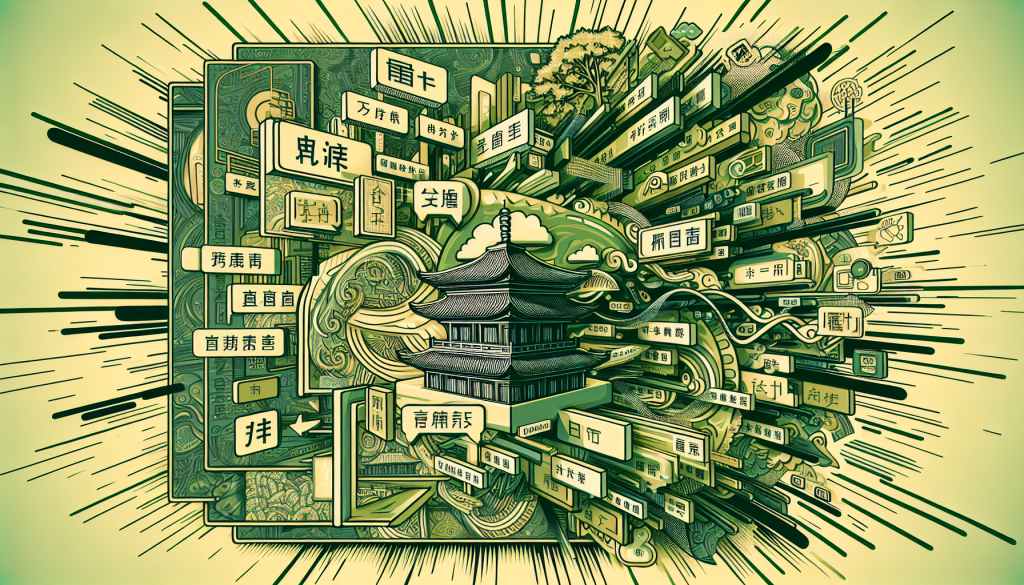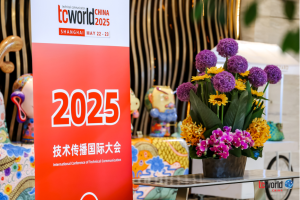Understanding Translation Services
In a world that's increasingly interconnected, the ability to communicate across languages and cultures is invaluable. Translation services bridge the gap between different linguistic groups, and when it comes to business, technical writing, or any form of communication, the accuracy and cultural relevance of translated content are paramount.
The Value of Website Localization
We recognize that english to chinese website translation is more than just converting text from one language to another; it's about adapting your online presence to resonate with Chinese-speaking audiences. Website localization extends your reach, allowing you to connect with millions of potential customers or users in their native language.
According to Big Language, translating your website and related materials is a critical step in expanding your audience on a global scale. However, the process involves intricate cultural nuances to ensure that the content is not only understandable but also engaging and relevant to your new audience.
Localization ensures that every aspect of your website—from currency and measurements to colloquialisms and cultural references—is tailored to your target market. This attention to detail enhances user experience and establishes trust with international visitors, ultimately contributing to your global success.
Technical Writing for Global Markets
Technical writing for global markets necessitates a meticulous approach. Whether it's user manuals, product descriptions, or scientific papers, the information must be precise and accessible to a non-English speaking audience. This is where professional translation services, including english to chinese document translation and english to chinese medical translation, play a crucial role.
Multilingual content, as outlined by LinkedIn, aims to make complex information clear and available to diverse audiences worldwide. For technical documentation, accuracy is key; a mistranslated instruction or guideline can have significant repercussions.
Our process involves several stages to ensure the highest quality of translation. We begin with an initial translation performed by native speakers with technical expertise, followed by proofreading and editing to refine the content. Finally, quality control measures are in place to verify that the final product is not only accurate but also culturally and contextually appropriate.
Understanding translation services and their significance in today's globalized environment empowers businesses and institutions to make informed decisions when venturing into new markets. By embracing website localization and specialized technical writing, organizations can effectively communicate their message and uphold their brand's integrity, no matter the language.
The Process of Website Translation
In our journey towards global communication, we understand that translating a website from English to Chinese isn't just about swapping words. It's an intricate process that involves several layers of work to ensure that your message resonates with your target audience. Here, we'll unravel how we approach website translation, localization, and the workflows we use to deliver excellence.
From English to Chinese
The first phase in our english to chinese website translation process is the direct translation of content. This step requires a deep understanding of the source language and the target language. Our translators are not only language experts but also have a strong grasp of the subject matter, ensuring that technical terms are translated correctly and contextually.
| Stage | Description |
|---|---|
| Text Extraction | We extract all the textual content from the website, including visible text and metadata. |
| Initial Translation | Our native Chinese translators convert the text while preserving the original meaning and context. |
| Contextual Adjustments | Adjustments are made to ensure the translated text fits the layout and design of the website. |
Localization Beyond Language
Localization is the next pivotal step. It extends beyond literal translation, incorporating cultural, contextual, and regional nuances to ensure the content feels natural and engaging to the Chinese audience (LinkedIn). This involves adapting currencies, units of measure, date formats, and culturally sensitive content to align with local expectations and practices.
Translation Workflows Explained
Our translation workflows are designed to maintain the integrity of your message while ensuring it's appropriate for the target audience. We follow a comprehensive process involving several checks and balances:
- Initial Translation: The content is translated by our professional translators with sector-specific expertise.
- Proofreading: A second linguist reviews the translation for accuracy and consistency.
- Editing: The content is refined for style, tone, and brand voice.
- Quality Control: A final review is conducted to ensure the highest standards are met.
- Implementation: The translated content is embedded back into the website, ensuring proper formatting and design considerations.
- Testing: The website undergoes rigorous testing to ensure full functionality in the Chinese language.
Our approach to translation and localization ensures that every aspect of your website, from blog posts to technical documentation, resonates with your Chinese audience. We also offer specialized services, including english to chinese document translation and english to chinese medical translation, to cater to various needs.
By entrusting us with your translation needs, you're choosing a partner that values precision, cultural relevance, and the power of clear communication. Let's navigate the complexities of language together to connect with audiences across the globe.
Challenges in English to Chinese Translation
In our journey to provide top-notch english to chinese translation services, we've encountered a myriad of challenges that go beyond mere word-for-word translation. The complexities of cultural nuances and the need for technical precision require a deep understanding to ensure that the translated content resonates with Chinese audiences.
Cultural Nuances and Localization
Translating a website from English to Chinese isn't just about changing words from one language to another. It's about conveying the same message, value, and emotion in a way that is culturally relevant and engaging to the target audience. As highlighted by Rubric, effective localization involves adapting images, graphics, colors, and even website layout to align with cultural preferences and practices.
| Aspect | Consideration in Localization |
|---|---|
| Images | Cultural Relevance |
| Graphics | Symbolic Significance |
| Colors | Cultural Associations |
| Layout | User Preferences |
Localization also involves understanding and respecting the cultural norms and taboos in China. What may be considered appealing in Western cultures could potentially be offensive in Chinese culture. This is where our native Chinese translators play a crucial role, as they bring an innate understanding of local customs and societal norms to the table, ensuring that all translated content is culturally appropriate.
Technical Aspects and Consistency
Chinese translation is riddled with technical complexities. One such complexity is the varying levels of formality that the Chinese language encompasses. The tone and style used in English content must be skillfully adapted to correspond with these levels to maintain the intended meaning and respectfulness (Smartling).
Moreover, consistency in terminology is critical, especially when dealing with specialized fields such as english to chinese document translation or english to chinese medical translation. Ensuring that technical terms are translated accurately and used consistently across all content is a significant challenge that requires expert knowledge and attention to detail.
| Field | Challenge |
|---|---|
| Medical | Precise Terminology |
| Legal | Consistent Legal Jargon |
| Technology | Up-to-Date Tech Vocabulary |
| Education | Academic Language Accuracy |
Lastly, the reliance on machine translation tools for Chinese translation is not advisable due to the language's intricacy. Human translators with expertise in both English and Chinese are often indispensable for achieving high-quality translations that a machine simply cannot replicate. By leveraging the skills of professional translators, we ensure that every translation is not only linguistically correct but also contextually and culturally accurate.
The Benefits of Professional Services
Engaging a global audience requires more than just translating text; it demands an understanding of cultural nuances and the subtleties of language. Professional translation services are not just about converting words but about bridging cultural divides and ensuring brand integrity.
Engaging Chinese Audiences Effectively
Expanding into new markets like China involves communicating in a way that resonates with local audiences. When we translate websites from English to Chinese, we are not just changing the language but also adapting the content to align with cultural expectations and norms. This can have a profound impact on engagement levels.
Chinese consumers show a marked preference for websites in their native language, associating them with greater trustworthiness and credibility, as noted by the Sekkei Digital Group. Therefore, professional english to chinese website translation services can significantly enhance the user experience and foster trust with Chinese audiences.
| Benefit | Description |
|---|---|
| Cultural Relevance | Ensuring content resonates with local customs and values |
| Enhanced Trust | Building credibility through language familiarity |
| Greater Engagement | Encouraging interaction by speaking the audience's language |
Brand Integrity and Identity
Maintaining brand identity across different languages and cultures is a complex task. Professional translation services help preserve the essence of a brand while making it accessible to a diverse audience.
Cultural considerations are paramount in maintaining brand integrity. Content must not only be translated accurately but must also reflect the brand's voice in a way that is culturally sensitive and appropriate. This includes the thoughtful use of images, colors, and even font types that align with local preferences and taboos (Day Translations).
Localization is a critical aspect of professional translation that goes beyond words—it adapts the brand message to the cultural context. For instance, a professional translator will be mindful of local norms and find culturally suitable expressions to convey the desired brand message (Day Translations).
By working with professionals, businesses can ensure that their brand is represented consistently and accurately across all markets, strengthening their global presence. Whether it's english to chinese document translation or english to chinese medical translation, the focus remains on preserving the brand's core values while adapting to the local cultural landscape.
| Brand Aspect | Consideration |
|---|---|
| Identity | Consistent brand voice and messaging |
| Integrity | Culturally appropriate and sensitive content |
| Consistency | Uniform representation across all platforms |
Professional translation services are essential for any business looking to expand globally. They provide the expertise necessary to engage effectively with international audiences, maintain brand integrity, and navigate the complexities of cultural diversity.
SEO in Multilingual Translations
As we expand our reach to global markets, understanding the intricacies of search engine optimization (SEO) for multilingual translations, particularly from English to Chinese, is essential. Here, we'll delve into the significance of visibility in Chinese search engines and the nuances of keyword research for the Chinese market.
Visibility in Chinese Search Engines
When we translate websites from English to Chinese, we're not just changing words; we're optimizing for a completely different digital ecosystem. Chinese search engines, such as Baidu, prioritize websites that offer content in the native language and are tailored to local preferences (Sekkei Digital Group). By localizing content and ensuring mobile optimization, a website's visibility and search engine rankings in China can substantially improve.
Furthermore, a well-translated and localized website is more likely to be indexed accurately by Chinese search engines. This makes english to chinese website translation a critical step not only for accessibility but also for enhancing online presence in Chinese markets.
Keyword Research for Chinese Market
Keyword research is the cornerstone of any successful SEO strategy, and this holds true even when targeting the Chinese market. The process involves identifying the terms and phrases that potential customers are using to search for products or services in Chinese search engines.
Here's a simplified table illustrating the types of keywords that might be relevant when translating a website from English to Chinese:
| English Keyword | Chinese Equivalent | Search Volume in China |
|---|---|---|
| “Online education” | “在线教育” | High |
| “Travel packages” | “旅游套餐” | Medium |
| “Health supplements” | “保健品” | Low |
It is crucial to conduct thorough research to determine the most relevant and high-volume keywords that align with your brand and offerings. This includes understanding the cultural context and consumer behavior specific to the Chinese audience.
Optimizing the translated content with these keywords will enhance the website's ability to rank higher in Chinese search engines, thus increasing its visibility among Chinese-speaking users. Additionally, integrating localized SEO practices can help in attracting and engaging Chinese audiences more effectively, ultimately leading to increased trust, credibility, and potential sales (ConveyThis, Sekkei Digital Group).
When we provide english to chinese translation services, including document translation and medical translation, we ensure that SEO best practices are an integral part of the process. This holistic approach guarantees that the translated content is not only accurate and culturally relevant but also primed for maximum online discoverability in the Chinese market.
Best Practices for Translation Services
Maintaining Updated Content
In the dynamic digital arena, keeping content current is imperative. As we venture into new markets, such as the Chinese-speaking demographic, it's not only about translating content once but ensuring that it remains relevant and accurate over time. Regular reviews and updates of english to chinese website translation are essential for several reasons: SEO optimization, customer engagement, brand image, and competitive advantage (LinkedIn).
To facilitate this, we can use content management systems (CMS) that support multilingual content and provide streamlined workflows for updates. Additionally, establishing a schedule for regular content audits can help identify areas that need refreshment or adjustment in response to market changes, new products, or services.
Maintaining a dynamic content update system ensures that our translated assets, including english to chinese document translation and english to chinese medical translation, remain an accurate reflection of our brand and retain the ability to effectively communicate with our audience.
Balancing Cultural Sensitivity and Brand Voice
Effective website translation is not merely a linguistic exercise; it also involves cultural adaptation to resonate with the target audience. Cultural nuances need to be carefully woven into the translation to ensure that content is compelling and culturally relevant (Big Language).
However, it's crucial to balance this cultural sensitivity with the preservation of our brand's voice and identity. This balance can be struck by developing a comprehensive style guide and glossary that outlines brand terminology, tone, and style to be used across all languages. Such guidelines serve as a roadmap for translators to maintain consistency while allowing room for cultural adaptation.
Here are some best practices we follow to achieve this balance:
- Creation of a Localization Kit: This includes a style guide, glossary, and context notes to provide translators with a deep understanding of our brand and the message we wish to convey.
- Engage with Native Translators: Collaborating with native speakers ensures that our content is culturally and contextually appropriate.
- Iterative Feedback and Review: We conduct regular reviews and incorporate feedback to refine the translation and cultural alignment.
By implementing these practices, we ensure that our translations not only speak the language of our audience but also reflect the essence of our brand, creating an authentic and engaging user experience.




![[Regulatory Update] Egypt Imposes New Certification Rules for Manual Translations [Regulatory Update] Egypt Imposes New Certification Rules for Manual Translations](https://maxsuntranslation.com/wp-content/uploads/2025/06/Egypt-Imposes-New-Certification-Rules-for-Manual-Translations-1-300x109.png)

